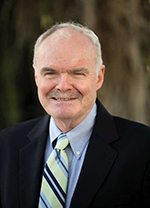Book of the Week Club
You see a lot of books like this one, oversized coffee table decorations, but not many are so well done and readable as Pioneer Parish – the history of Saint Anthony, Broward’s first Catholic Church. It has been in the works for two years, but it just came out this week, and the effort that went into this project is obvious. The photography and graphics, a combination of old-time stuff and contemporary shots, are an artistic contribution to the historical record of South Florida.
One senses the touch of a pro, and that pro is Chauncey Mabe, former book editor and contributor to the Sun-Sentinel. He is listed as editor. In fact, he wrote most of the book. It was designed and printed by Middle River Press in Oakland Park, co-owned by Judy Borich; Judy Borich also did most of the considerable research.
“It’s amazing what she accomplished in getting things for our archives,” says Sharon Lynch Murrah, who is development director for St. Anthony Catholic School, a historic essential component of the parish. That research is reflected in Mabe’s opening sentence.
“Looking back from the twenty-first century, it’s hard to appreciate how much hatred against Catholics existed a century ago in South Florida,” he writes. That is indeed hard to appreciate, especially since, as the book notes, the first family of Fort Lauderdale was brought here by Philemon Bryan, a converted Catholic. And by the 1920s, Catholic families such as Bryan, Gore, Lochrie and Camp, all enduring names to this day, were beginning to dominate the city’s business and politics.
Mabe recounts the story of Julia Murphy, who had come from Nebraska in 1915 to take a job as a public school teacher, and was almost immediately dismissed when community leaders, including the owner of what became the Sun-Sentinel, learned she was a Catholic. You wonder what religion they thought a woman named Murphy would be. Anyway, it was a controversy which divided the public for a number of years, and in that time of religious tension St. Anthony was founded. The original church in 1921 was on Las Olas Boulevard. When the present larger church was built decades later, the old church was moved to become the present First Lutheran Church of Northeast Third Ave.
This kind of candid writing appears throughout the book, especially in a chapter dealing with the 1970s transition from the longtime but aging pastor, Monsignor John J. O’Looney, to Father Laurence Conway. The parish had lost some of its luster. School enrollment was down, lack of vocations to the religious life required hiring lay teachers who needed to make a living. The surrounding neighborhood was out of favor with young families who were moving to western suburbs. Financial pressures surrounded the job. Father Conway would have preferred his former assignment in Naples.
Several priests, including Conway, who died recently, are quoted on the subject. It was a difficult time. O’Looney, a builder priest if ever there was one, had started what is now St. Thomas Aquinas High School, helped start Holy Cross Hospital and had a hand in establishing other Catholic parishes throughout the county. He was by then a community legend, but a strong willed man who resisted the modernization of the Church. He also wanted his successor to be another native priest from Ireland (as so many in South Florida still are) and was disappointed when Conway, from Philadelphia, was named by the Archbishop. It was a difficult time for the diplomatic Fr. Conway, but it is the truth and handled with a deft touch.
The book has a happy ending, as such books should, with a description of the renewal of downtown Fort Lauderdale and the east side neighborhoods which feed St. Anthony School. The 2011 church and school are now under the leadership of Father Jerry Singleton, a native Irishman, and stronger than ever. Monsignor O’Looney would be pleased.
The closing chapters deal with St. Anthony’s generous and recent support for a Catholic parish in Africa, and a salute to the numerous families who have supported or attended its school. Their names define a county. Among them are U.S. District Judge William Zloch, Brian Piccolo, Dr. Dan Arnold, Chris Evert, Tim Gannon, Mike Stanley, Michael Connelly, E. Clay Shaw Jr., Major Gen. Ervin C. Sharpe Jr., Mike Mularkey, R.H. Gore, Susan Hayward, Rear Admiral Garland P. Wright, Jr. – and last, but hardly least, Fort Lauderdale Mayor Jack Seiler.

